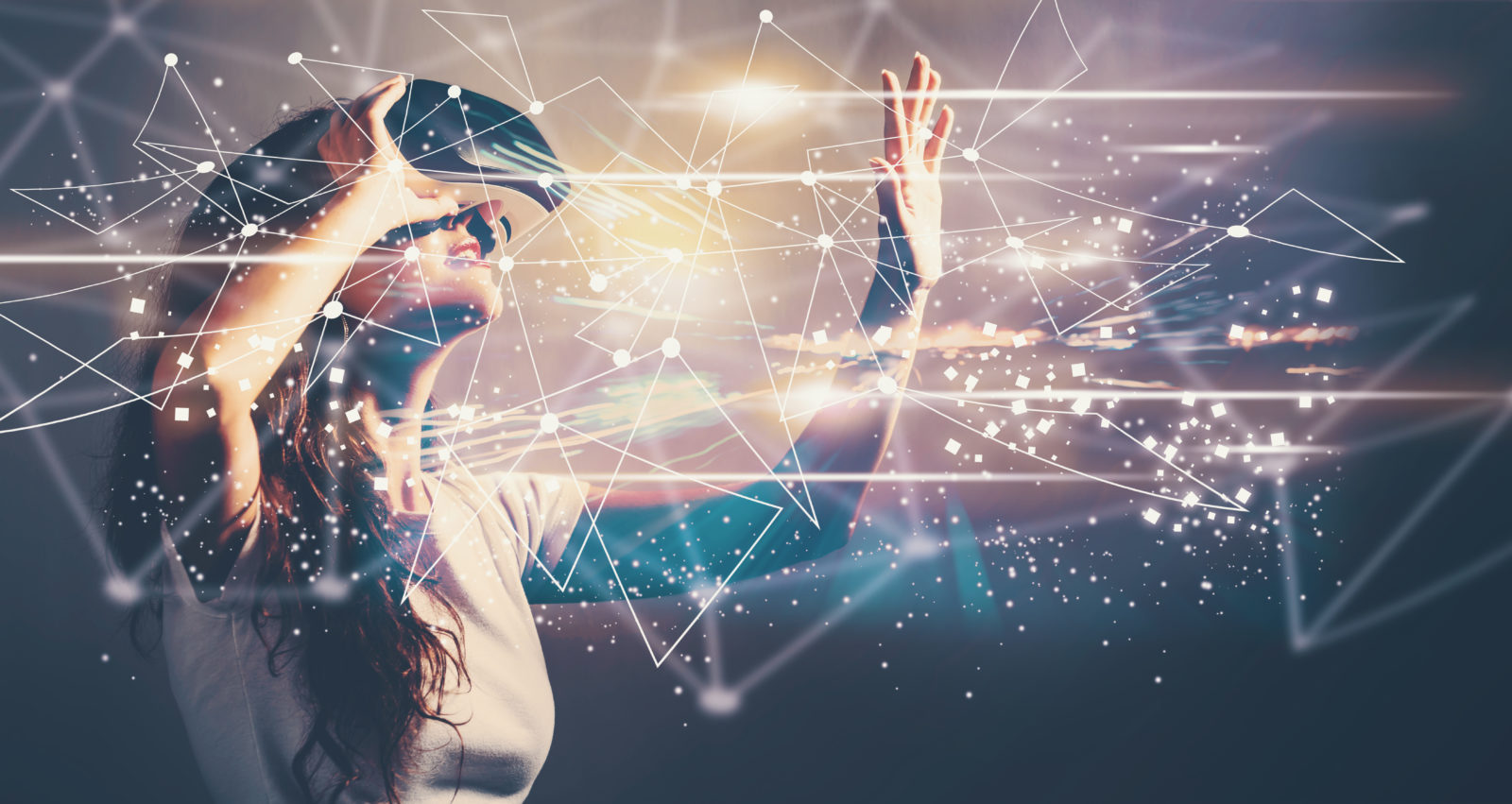In this fast moving IT economy, no one can predict the direction of future technology trends but we’re confident certain technologies are really going to take hold. Alongside the three mentioned in our previous blog – the Internet of Things, humanised Big Data, and the on-demand economy – here are three further technology trends which make a big difference to our working and personal lives.
Augmented Reality (AR) and Virtual Reality (VR).
We’ve been hearing about AR and VR for some time. Now both technology trends are breaking through into the mainstream. What are they and how do they differ from each other?
Broadly speaking, AR technology places computer-generated enriched content on top of an existing reality, to make it more interactive. For example, it can generate 3D messages, photos or emails on mobile devices. A cinema chain has used AR to enable movie-goers to point their smartphones at a movie poster, wherever they see it – at the cinema, in magazines etc – to find information about the movie and book their tickets. Really rather useful.
By contrast VR is a computer-generated simulation or recreation of a real life environment. Typically achieved by wearing a headset that immerses you in simulated reality, VR stimulates vision and hearing so you feel you’re actually there. Examples of VR include 3D video and computer games, or flight simulators for pilot training. So, although primarily used for entertainment, VR can also be practical, especially if you’re a pilot…
Recent gaming successes include Pokemon Go (AR) and Oculus Rift (VR). A market explosion for both followed, but so far its early days with devices and technology for each in their infancy. Watch this space though.
Machine learning
Defined as the ‘subfield of computer science that gives computers the ability to learn without being explicitly programmed’, the term machine learning was first coined by Arthur Samuel in 1959. Given the passage of the years, you’d be forgiven for thinking that it’s never going to happen but machine learning has come on leaps and bounds recently.
Born from pattern recognition, machine learning is basically a computer that learns independently, using data. Exposed to new data, computers adapt, and are currently learning to apply algorithms to Big Data. And there are now widespread examples of machine learning that we either have common knowledge or experience of, including:
- the self-driving Google car
- online recommendation offers based on our purchasing history – e.g. from Amazon and Netflix
- fraud detection
Machine learning can enable us to analyse more complex data, deliver more accurate results, produce more precise models, identify profitable opportunities and avoid unknown risks.
Our ability to apply Big Data analytics to every kind of transaction we make, and every user experience we have as consumers, increases on a daily basis, As machine learning beds down, the likelihood is that this technology trend will impact every kind of consumer app that we use. This kind of artificial intelligence will quite simply become the norm.
Physical and digital integrations
By 2020, there will be over 30 billion connected mobile devices across the globe. (source: Firefox). Smartphones are everywhere, and many of the apps on offer try to mirror the real world or real life interactions as closely as possible.
Smartphone technology enables us to make decisions, purchases and other transactions whenever we want, wherever we are. Transactions that previously we could only make at a physical location. Now we are seeing the blurring of lines between the physical and the digital.
For retail in particular, these are very exciting times for us as consumers. We can order clothing online for collection at our local store, we can use touch pads to order our food in MacDonalds, we can choose to collect our Amazon packages at a Post Office hub.
We’re going to see further integrations between physical and digital environments. We’ll be able to make an online appointment to meet the virtual pharmacist in our high street chemist, access digital features in stores such as maps and product trials, and browse online with the help of a virtual shopper. Our experience as consumers of the future is going to be exciting, that’s for sure.
All of these technology trends – the services and the products on offer – are likely to embed themselves into our personal and business lives. The accompanying logistics and legalities could be mind-boggling. The uptake of these new technologies is likely to be accompanied by a plethora of new contracts.
Make life easier on yourself. Consider the use of contract management software to take away some of the pain. We offer Contract Insight, a solution used by many Fortune 500 companies, and one that helps with contract evaluation, negotiations and renewal.
Why not revolutionise your results while keeping abreast of technology trends by contacting me, John O’Brien, Director, Four Business Solutions at [email protected]?




















